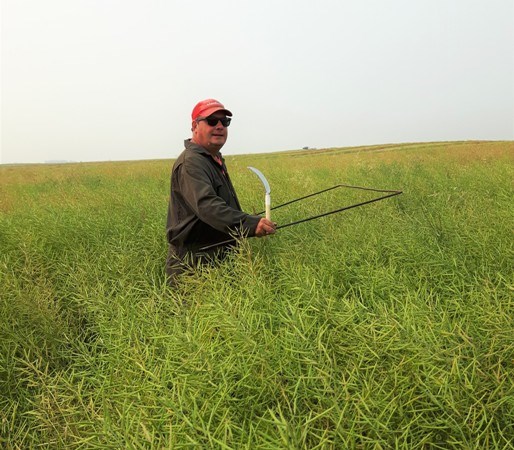Dr. Jeff Schoenau isn’t afraid to get his hands dirty. He owns and operates a grain farm near Central Butte and has been working as a soil scientist for the University of Saskatchewan for 33 years.
In a paper published in the Canadian Journal of Soil Science, PhD student Noabur Rahman, Schoenau and colleagues Derek Peak and Ryan Hangs collected and analyzed soil from across the prairies — including samples from Schoenau’s farm.
The study, which offers recommendations for improving fertilizer use and increasing crop yields for farmers, builds on previous studies Schoenau and Peak have completed as collaborators at Canadian Light Source at USask.
Schoenau considers some of their work done on the and beamlines at the CLS to be ground-breaking.
“There are not a lot of folks that have used these techniques to study the fate of some of these nutrient elements in the soil environment as applied in the field,” said Schoenau.
Using chemical analysis and synchrotron techniques, the team looked at soil micronutrients in soil samples from Saskatchewan, Alberta and Manitoba.
“We are interested in the fate of added fertilizers containing those elements in the soil, including the different forms it ends up in,” he explained.
The forms an added plant nutrient is converted into affects the ability of a plant to access the essential nutrients it needs to grow. If the plant is unable to access the nutrients in the fertilizer, it can lead to poor plant health and crop loss.
This team wants to help farmers optimize their fertilizer management, which would increase nutrient use efficiency and crop yields while decreasing the potential for nutrient escape into the environment.
“We can help improve the bottom line for growers by revealing fertilization approaches that promote greater crop utilization and ‘best bang for their buck’ in regards to fertilizer dollars spent while at the same time minimizing any adverse effects on the environment by reducing nutrient loss,” he added.
In their papers, the researchers provide new insights for best “4R” fertilizer management practices, including best source, timing, placement and rate.
“What we were able to reveal with the synchrotron work described in this particular paper is how basic soil properties like carbonate and organic matter content influence the nature of zinc and copper. We found both of these elements to be strongly associated with carbonate minerals in prairie soils. They become fixed through sorption and precipitation,” he said. “This means it is less soluble and less plant available.”
Based on their findings, the scientists recommend “banding” certain fertilizers into the soil rather than just spreading them on the surface. By dispensing the fertilizer beneath the surface of the soil in a concentrated band close to the time of plant need, it helps to reduce sorption and fixation, distribute the nutrients close to where the roots are, and therefore increase availability.
Seeing the data was very exciting for Schoenau. “We concluded that a really effective approach is the use of traditional chemical separation techniques in combination with synchrotron techniques to get the best understanding and confidence about what kind of compounds are being formed when the nutrients are added in that soil,” he said.
He says he believes synchrotron technology has great potential for assisting agricultural research.
“It offers a whole new perspective,” said Schoenau.




